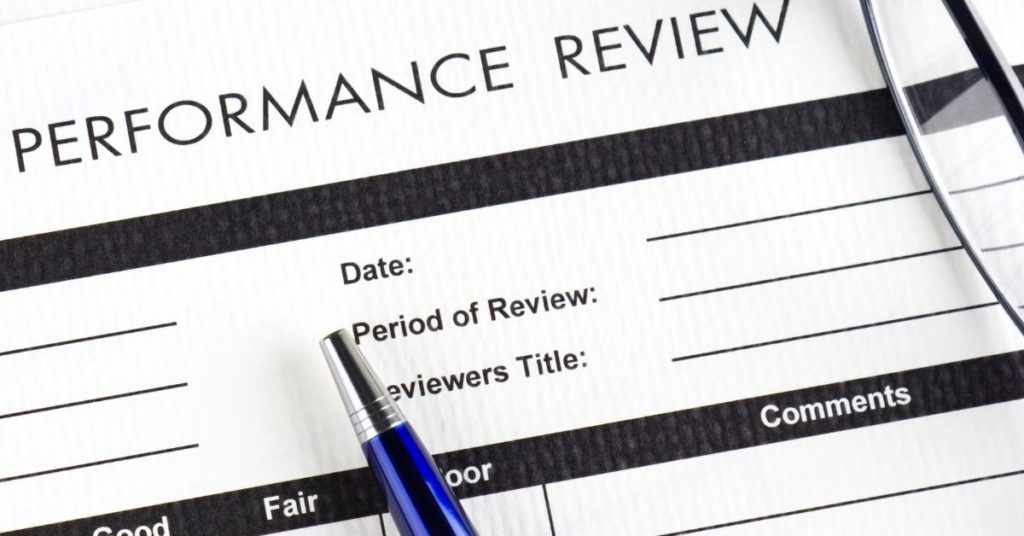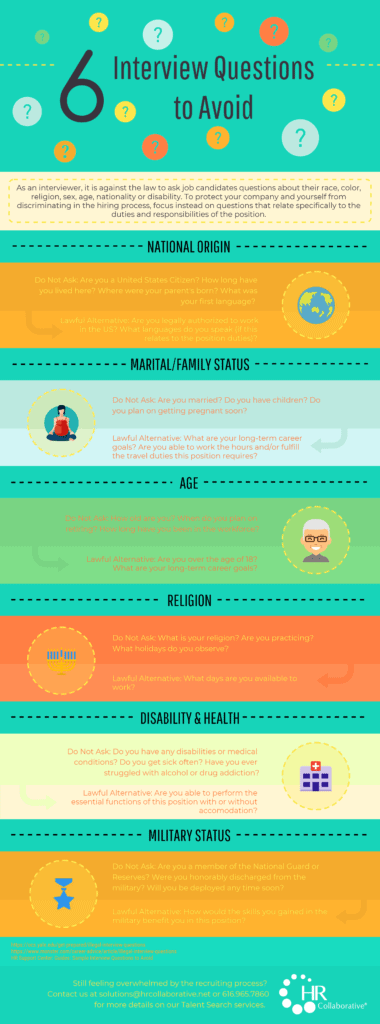HR Compliance Checklist
Written by: HR Collaborative

Keeping track of all the employment laws, regulations, and standards that your company needs to follow can be a challenging and time-consuming job—especially if you don’t have the right help. This is especially true given the rise in discrimination lawsuits in recent years and increased scrutiny of HR compliance.
That’s why we’ve created this HR Compliance Checklist to help businesses create and maintain a foundational HR compliance strategy.
Keep in mind that this list is for US-based organizations, it is by no means exhaustive, and it’s not legal advice. We advise you to reach out to our HR compliance experts or your legal counsel for questions specific to your business. You can also check out our in-depth HR Compliance guide for additional information.
List of Key US Employment Acts & Agencies
State & Federal Agencies
There are a range of regulatory groups and organizations at the state and federal levels in the United States that you’ll need to know of and follow updates from, including (but not limited to):
- EEOC (Equal Employment Opportunity Commission): This body enforces federal laws prohibiting discrimination in the workplace based on protected classes such as race, color, religion, sex (including pregnancy, sexual orientation, or gender identity), national origin, age (40 or older), disability, or genetic information (including family medical history).
- Department of Homeland Security: The U.S. Citizenship and Immigration Services (USCIS) division of the Department of Homeland Security oversees I-9 compliance.
- NLRB (National Labor Relations Board): The NLRB enforces the National Labor Relations Act, which protects the rights of all employees (union and non-union) to engage in collective bargaining, and discuss wages, benefits, or terms of employment with others.
- OSHA (Occupational Safety & Health Administration): They set and enforce standards to ensure safe and healthful working conditions, including regulations related to workplace safety and health.
- Department of Justice: They oversee worker protections under the Americans with Disabilities Act that broaden access, opportunity, and inclusion for people with disabilities.
- Department of Labor: They administer and enforce the Federal Labor Standards Act (FLSA) that sets a federal minimum wage, rules for timekeeping, and defines exempt and non-exempt employment status.
State & Federal Acts
We’ve listed some of the most important state and federal acts that businesses need to comply with, but there may be more acts that are specific to your state that you’ll need to research. Many states and localities have their own laws impacting minimum wage, sick time, vacation time, jury duty, and military leave.
- ACA (Affordable Care Act): The ACA requires employers with 50 or more full-time employees to offer affordable health insurance coverage to their employees.
- ADA (Americans with Disabilities Act): This body prohibits discrimination against individuals with disabilities in all areas of public life, including employment.
- ADEA (Age Discrimination in Employment Act): This act prohibits discrimination against individuals who are 40 years of age or older. It applies to all aspects of employment, including hiring, firing, promotions, and benefits.
- COBRA (Consolidated Omnibus Budget Reconciliation Act): COBRA gives employees and their families the right to continue their group health insurance coverage for a limited period of time after certain qualifying events, such as the loss of a job or a reduction in work hours.
- ERISA (Employee Retirement Income Security Act): This law sets standards for retirement plans and other employee benefit plans, including health insurance and disability insurance. It establishes rules for plan administration, reporting, and disclosure to ensure that employees receive the benefits they are entitled
- FLSA (Fair Labor Standards Act): The FLSA establishes minimum wage, overtime pay, record keeping, and youth employment standards for employees in the private sector as well as federal, state, and local governments. It requires employers to pay covered nonexempt employees at least the federal minimum wage and overtime pay for hours worked over 40 in a workweek.
- FMLA (Family and Medical Leave Act): This act provides eligible employees with up to 12 weeks of unpaid, job-protected leave for certain family and medical reasons. The FMLA also requires employers to maintain health benefits during the leave and to restore the employee to their same or equivalent job at the end of the leave.
- GINA (Genetic Information Nondiscrimination Act): GINA prohibits discrimination based on genetic information in health insurance and employment. It prohibits employers from requesting, requiring, or purchasing genetic information about employees or their family members, with certain exceptions.
- HIPAA (Health Insurance Portability & Accountability Act): This law protects the privacy and security of individuals’ health information. HIPAA establishes national standards for the protection of health information and requires certain entities, including health care providers and health plans, to protect the privacy and security of health information.
- MHPAEA (Mental Health Parity & Addiction Equity Act): The MHPAEA requires health insurance plans to provide mental health and substance use disorder benefits that are comparable to medical and surgical benefits. It prohibits plans from imposing less favorable benefit limitations on mental health and substance use disorder benefits than on medical and surgical benefits.
- PDA (Pregnancy Discrimination Act): The Pregnancy Discrimination Act prohibits discrimination based on pregnancy, childbirth, or related medical conditions. The PDA requires employers to treat pregnant employees the same as other employees who are similar in their ability or inability to work.
- PUMP Act (Providing Urgent Maternal Protections for Nursing Mothers Act): PUMP requires employers to provide reasonable break time and a private place for nursing mothers to express breast milk at work. It also prohibits discrimination against employees who are breastfeeding.
- PWFA (Pregnant Workers Fairness Act): This act prohibits employment discrimination against pregnant workers and requires employers to provide reasonable accommodations to pregnant employees. It ensures that pregnant employees are treated fairly in the workplace and are not forced to choose between their jobs and their health.
- USERRA (Uniformed Services Employment and Reemployment Rights Act): This act protects military members and veterans from employment discrimination and allows them to regain employment following military leave.
- WARN (Worker Adjustment & Retraining Notification Act): This law requires employers to provide advance notice of mass layoffs and plant closures. It helps protect workers and their families by giving them time to prepare for the loss of employment and to seek new job opportunities or retraining.
HR Compliance Checklist
Below is a helpful guide to compliance tasks that you’ll want to keep track of. Keep in mind that this checklist also isn’t exhaustive, and there may be differences depending on the type of business you operate.
1. General Compliance
◯ Update Your Employee Handbook
It’s important to regularly review and update your employee handbook to make sure it reflects current policies and procedures. This helps to communicate expectations clearly to your employees while demonstrating your commitment to compliance.
◯ Monitor Updates to Changing Labor Laws
Make sure you and your team stay informed about changes to labor laws at the local, state, and federal levels to keep your policies and procedures compliant. Set a quarterly reminder to check the latest developments, and find a great organization or website to get up-to-date information.
◯ Ensure Proper Employee Classification under the FLSA
As you hire or promote your employees, you’ll need to properly classify them as exempt or non-exempt from overtime. It’s also important to ensure that your independent contractors are classified correctly to avoid legal issues.
◯ Standardize Disciplinary & Termination Procedures
You’ll want to develop and consistently apply disciplinary and termination procedures to ensure fairness and reduce the risk of discrimination claims. Check out the procedures used by businesses of a similar size and industry for inspiration and guidance. It’s also important to train leaders on your policies.
2. Record Keeping
◯ Keep Sensitive Documents Separate from Personnel Files
It’s essential to maintain confidentiality by keeping sensitive documents, such as medical records and background checks, separate from personnel files. Work closely with your IT personnel to make sure that documents are only accessible to authorized staff.
◯ Complete I-9 Forms Correctly and On Time
Make sure that a Form I-9 is completed within three days of hiring any new employee to verify their identity and eligibility to work in the United States. Be sure to review thoroughly and only accept documentation deemed acceptable by USCIS instructions.
◯ Establish Procedures for Workplace Conflicts & Grievances
Your team should always have clear procedures for addressing workplace conflicts and grievances to resolve issues quickly and fairly. The procedures should be clear and specific enough that employees won’t argue with their implementation, but flexible enough that they can be applied to each situation as appropriate.
3. Training & Expectations
◯ Train Employees on Anti-Discrimination & Anti-Harassment Policies
You’ll want to provide regular training on anti-discrimination and anti-harassment policies to educate employees about their rights and responsibilities. This should be part of employee onboarding and as a regular refresher training.
◯ Maintain Accessible Job Descriptions
Employee roles are always changing, especially in growing and second-stage businesses. Be sure to keep job descriptions up to date and accessible to your employees so they have clarity as their responsibilities grow and change.
◯ Establish Comprehensive Remote Work Policies
You should create and communicate comprehensive policies for remote work to make sure that employees understand expectations and maintain productivity. Even if your organization is mostly in-person, you should still have these policies for exceptions.
4. Leave Management
◯ Provide Clear Information About Employee Rights During Leave
It’s important that you communicate clearly with employees about their rights and obligations regarding leave, including FMLA and other applicable laws. This information should be part of their onboarding as well as in an accessible place whenever they need to look at it.
◯ Monitor Updates to State-Specific Sick Leave Laws
Always stay informed about changes to state-specific sick leave laws to ensure compliance with leave requirements.
◯ Establish an Interactive Process for Accommodating Disabilities
Create a process for accommodating employees with disabilities to ensure they can perform in their role, and you’re exceeding the requirements of the ADA and other laws.
5. Safety
◯ Train Supervisors to Manage Workplace Injuries
All of your supervisors should be properly trained in managing workplace injuries. This applies to offices as much as factories, since any injury during work hours can mean potential liability for your company.
◯ Record Workplace Injuries
It’s essential that you accurately document workplace injuries to comply with OSHA requirements and/or state-specific laws to reduce the likelihood of lawsuits from injured workers and identify ways to improve workplace safety.
6. Total Rewards
◯ Ensure Fair & Consistent Pay Administration
It’s always good practice to have clear guidelines for pay administration to ensure that employees are compensated fairly and consistently. If issues arise, you’ll have these written guidelines to fall back on.
◯ Maintain Proper Payroll Practices
There are a number of essential payroll practices you’ll want to implement, including having reliable software for payment that more than one person at your company is properly trained and authorized to use. You’ll also need to ensure employees receive detailed pay stubs that clearly outline their earnings, deductions, and net pay, as well as information about hours worked, pay rates, and overtime.
◯ Prioritize Pay Transparency
Having clear policies for standard and overtime pay will not only ensure compliance with federal and state regulations but also prevent many issues and disputes with employees before they arise.
◯ Post Notices in a Prominent Area
Fair Labor Standards Act (FLSA) and labor laws should be posted in a prominent area and updated as labor laws change. Notices that align with employee benefit plans should be provided annually, typically at enrollment time.
Get a Free Consultation
Want expert advice on creating an HR compliance list for your organization? Reach out to the team at HR Collaborative to setup a free consultation to help your organization avoid potential fines and lawsuits.
Download Our HR Compliance Essentials Guide
Looking for a more in-depth human resources compliance checklist? Download our latest guide for more information. Reminder: the guide doesn’t contain legal advice. We advise you to reach out to our HR compliance experts or your legal counsel for questions specific to your business.
Frequently Asked Questions (FAQ)
What Is HR Compliance?
HR compliance refers to the process of ensuring that an organization’s human resources policies, practices, and procedures comply with relevant laws, regulations, and standards. This includes laws related to employment, labor, workplace safety, and employee benefits.
What Are the Risks of Non-Compliance?
Non-compliance with HR regulations can lead to a range of risks and consequences for organizations, including:
- Legal action
- Fines and penalties
- Operational disruption
- Reputational damage
- Negative impact on culture and a loss of employee trust
- Difficulty attracting and retaining talent
How Can I Keep Track of Key HR Compliance Dates?
Download our 2024 HR Compliance Calendar! It includes relevant dates for HR compliance for this calendar year, such as deadlines for filing tax forms, conducting performance reviews, updating policies, and training employees on new laws or regulations.
When Should I Seek Legal Advice?
Whenever you have complex questions regarding compliance with laws or regulations that can’t be addressed by an HR compliance expert, it’s time to seek legal advice. This is especially true in cases where new laws are being implemented and there is a lack of clarity on the best way to ensure compliance. An employment law expert will help you minimize the risk of legal issues by taking the safest course of action.
Share This Article

































































































